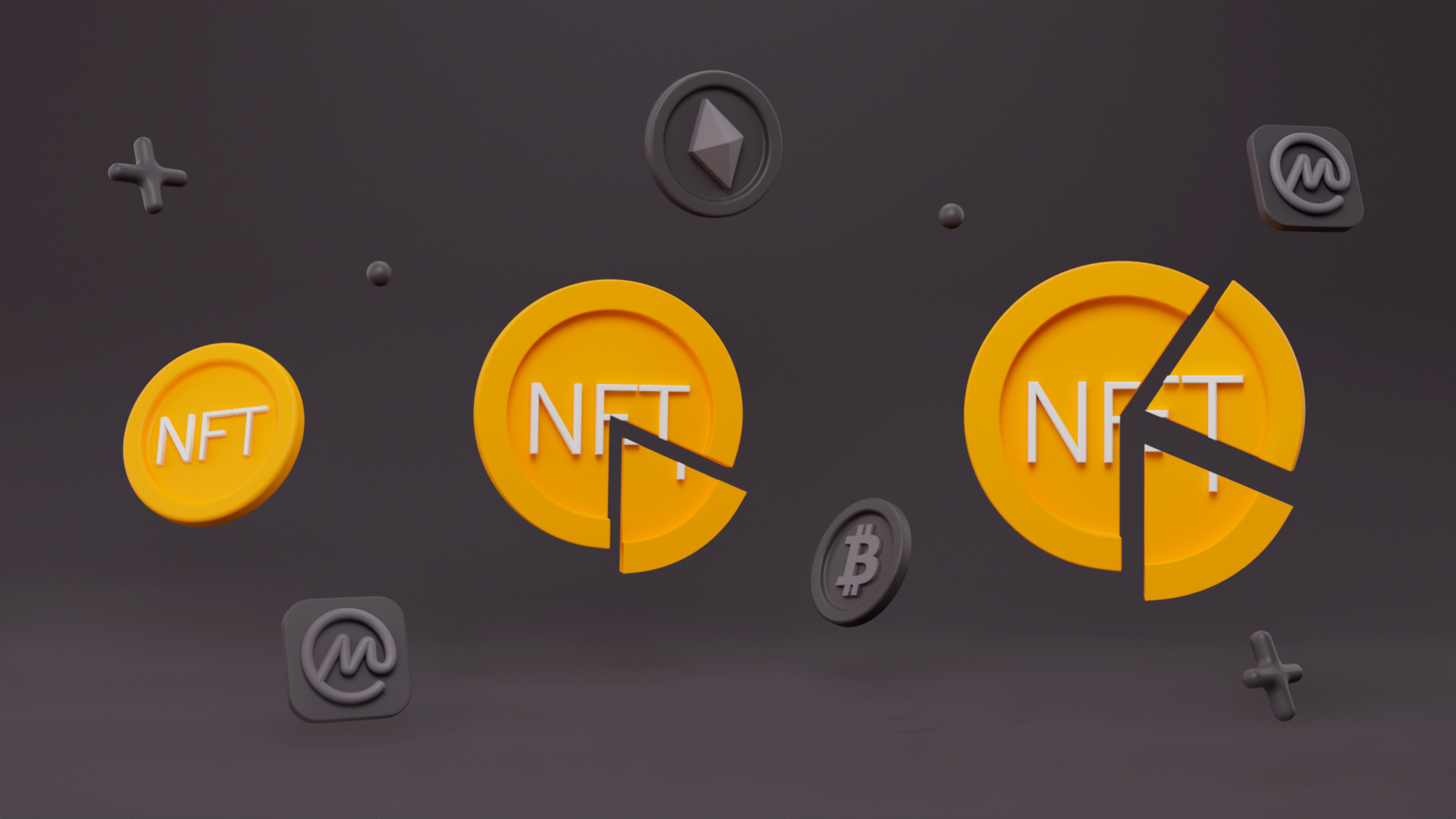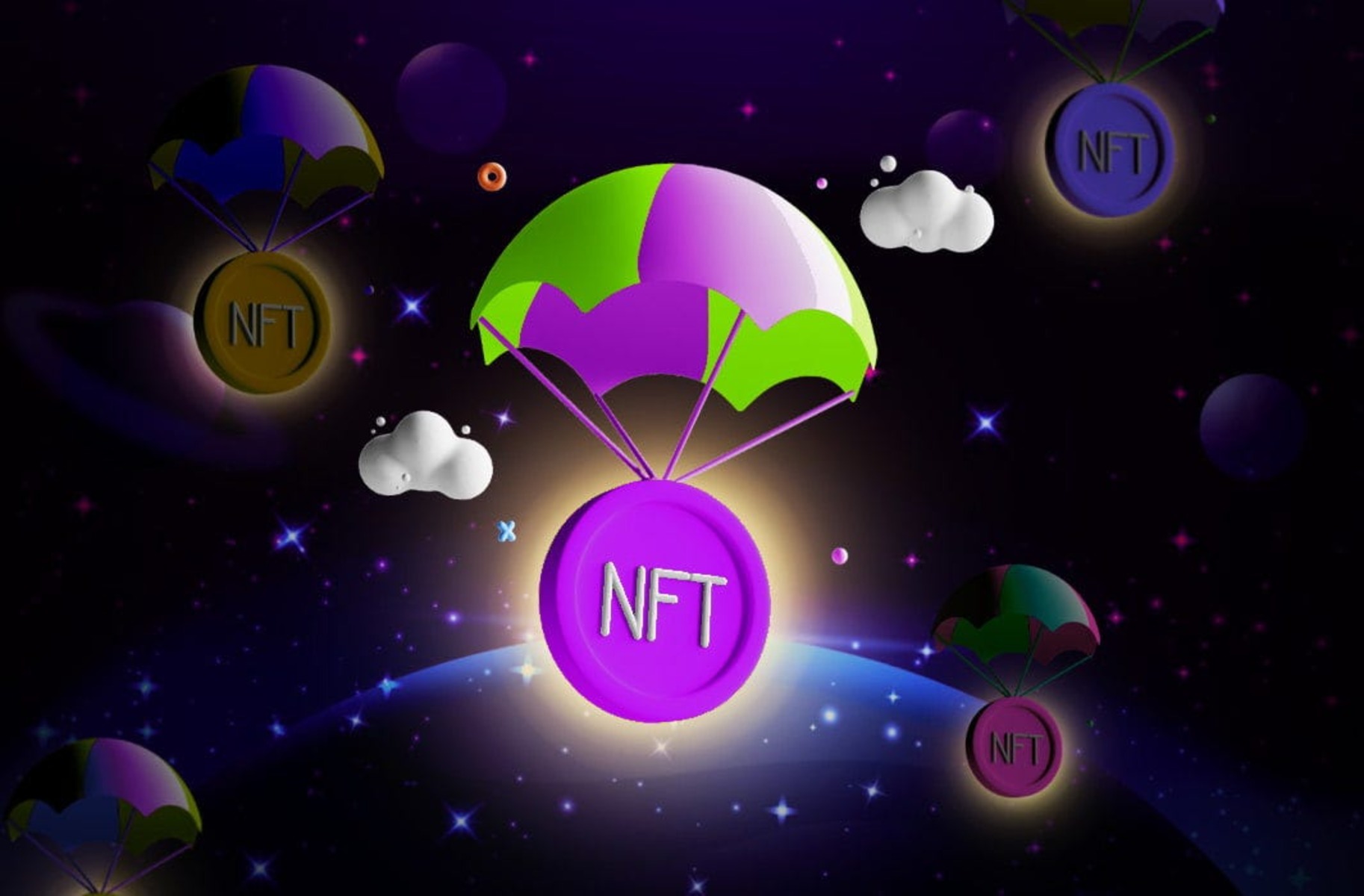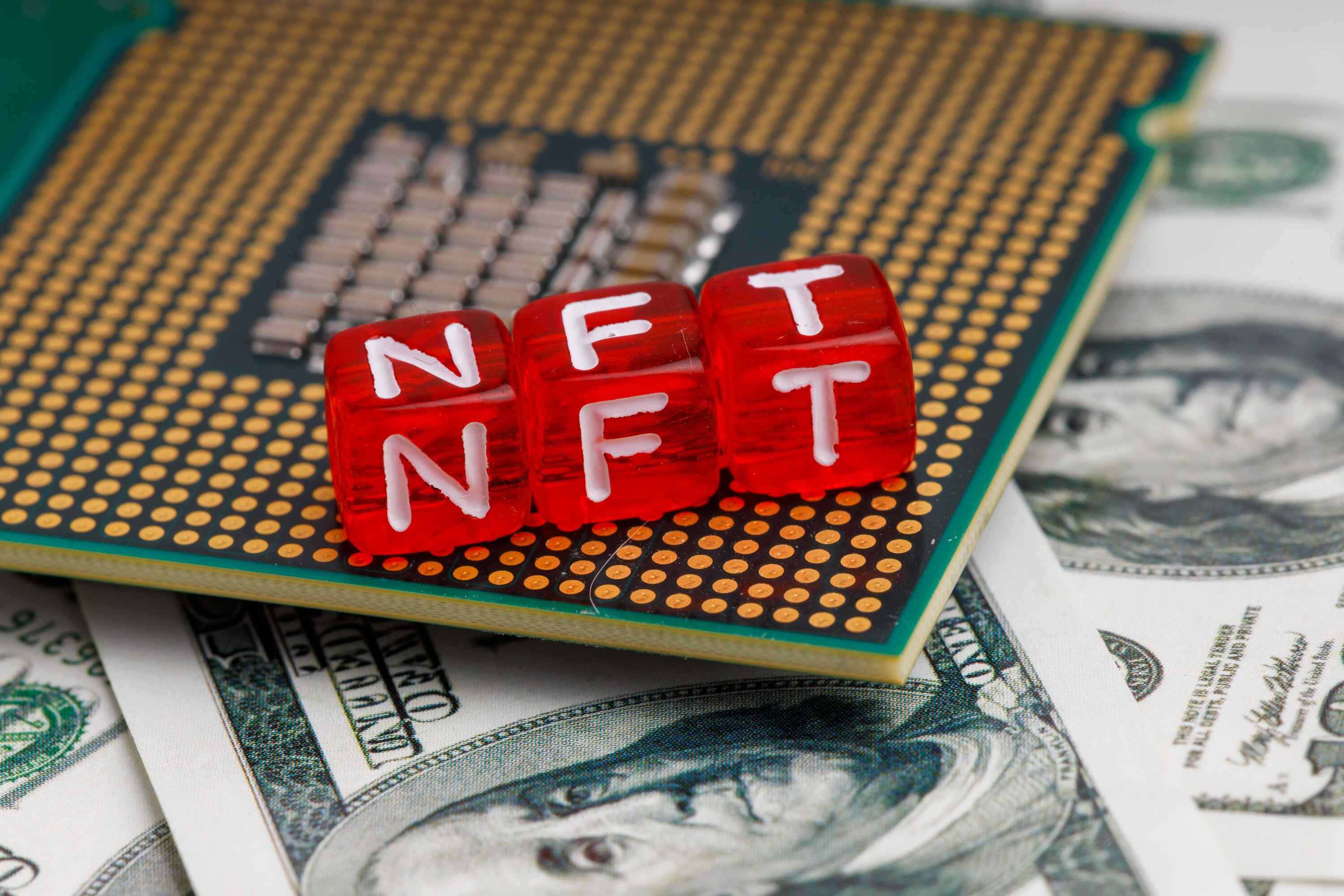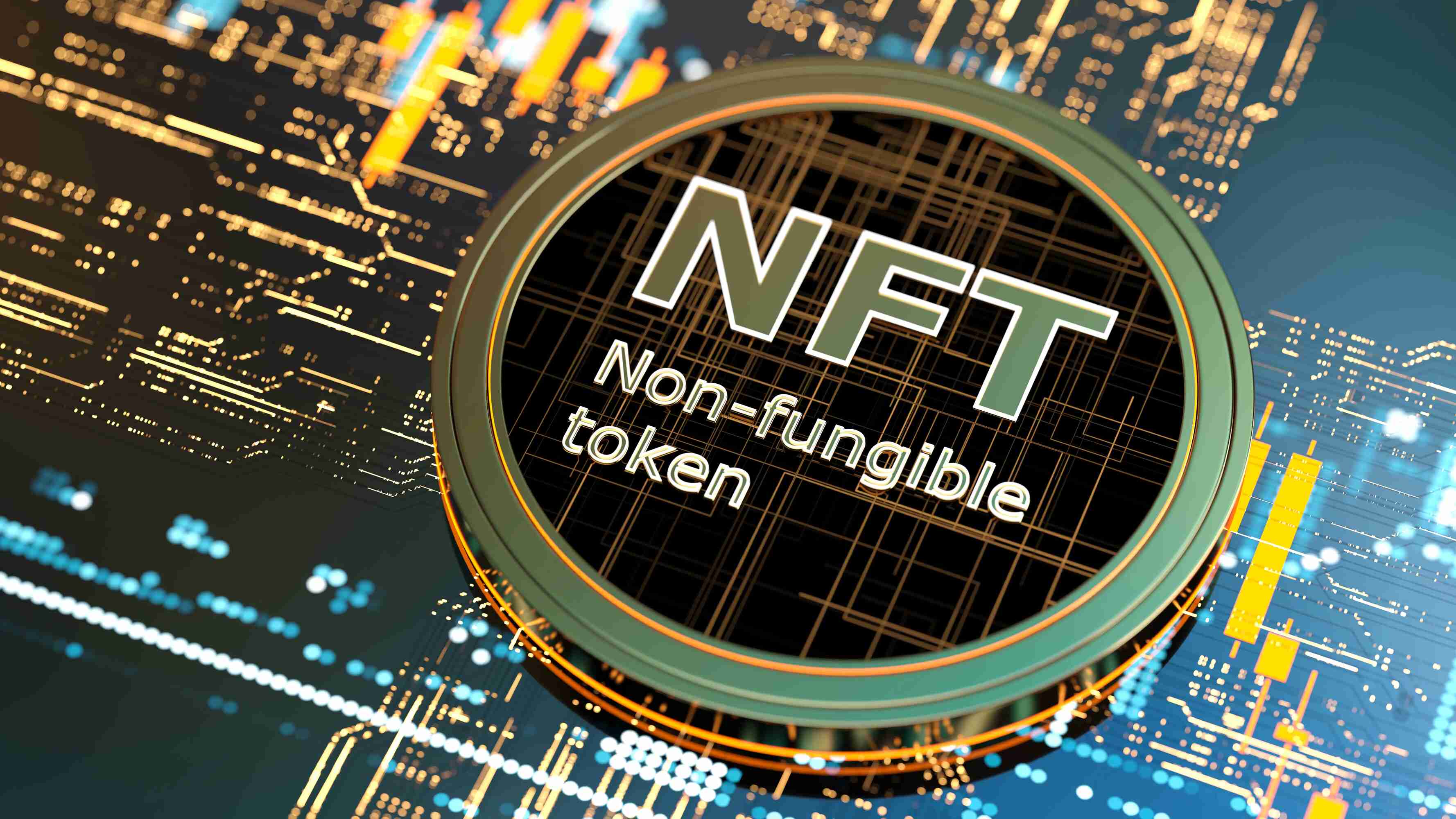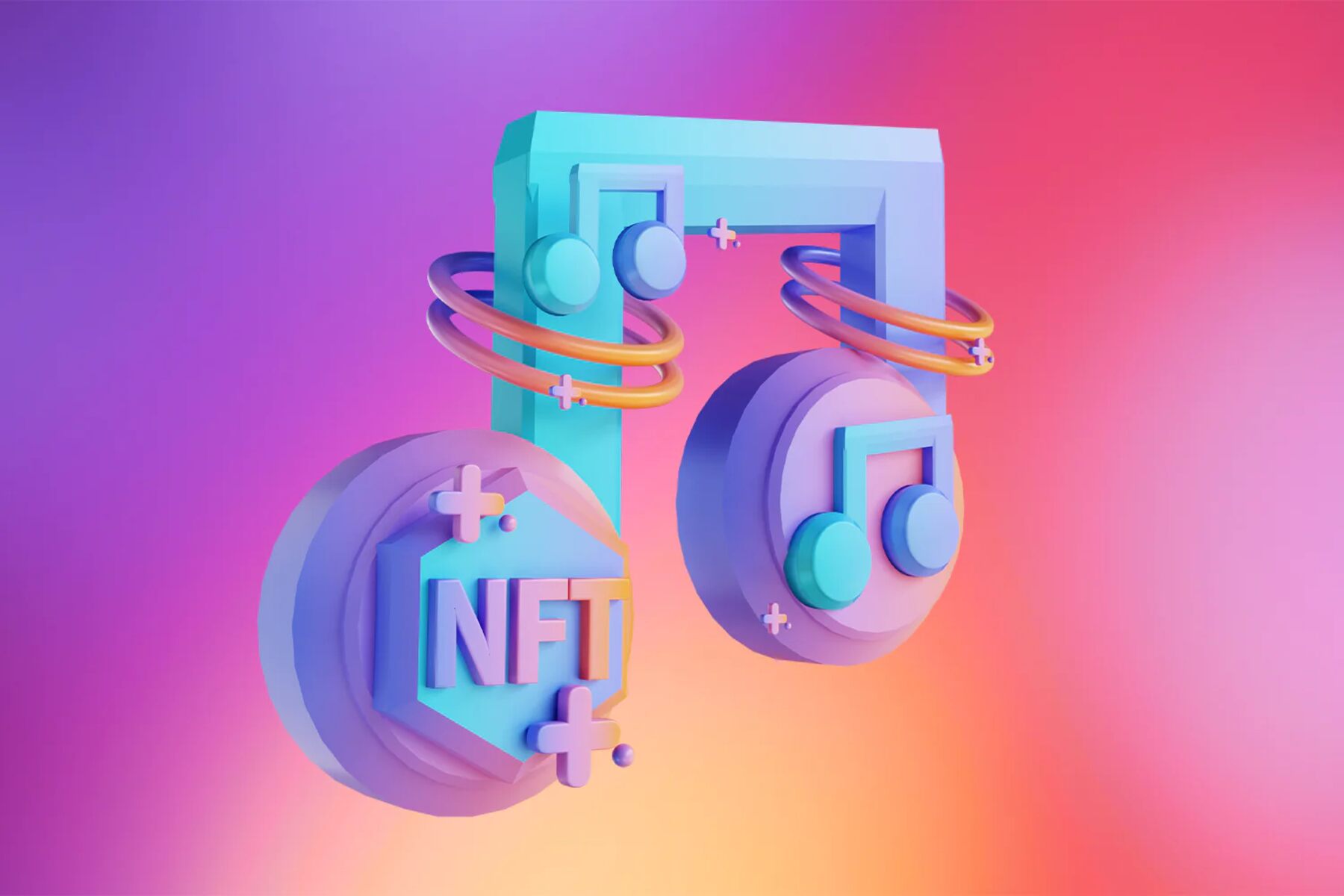Introduction
Welcome to the exciting world of Non-Fungible Tokens (NFTs)! In recent months, NFTs have gained significant attention in the digital marketplace. They have revolutionized the way we perceive and trade digital assets, from artwork and collectibles to virtual real estate and even tweets.
But what exactly are NFTs? Non-Fungible Tokens are unique digital tokens that represent ownership or proof of authenticity of a specific item or piece of media. Unlike cryptocurrencies such as Bitcoin or Ethereum, where each token is interchangeable for another of the same value, NFTs are one-of-a-kind and cannot be exchanged on a 1:1 basis.
Within the NFT ecosystem, there is a fascinating concept known as Fractional NFTs. These are NFTs that are divided into smaller, tradable fractions, allowing multiple investors to purchase a stake in a single item. This innovation has opened up a world of opportunities for both creators and collectors alike.
Throughout this article, we will explore the ins and outs of Fractional NFTs, including how they work, their benefits, risks, and potential applications. Whether you are an artist looking to monetize your creations, an investor seeking new opportunities, or simply curious about the evolving landscape of digital ownership, understanding Fractional NFTs is an essential aspect of navigating the NFT market.
What are NFTs?
NFTs, or Non-Fungible Tokens, are revolutionizing the way we trade and authenticate digital assets. Unlike cryptocurrencies like Bitcoin or Ethereum, which are fungible and can be exchanged on a 1:1 basis, NFTs are unique and indivisible. Each NFT contains distinguishing information that sets it apart from other tokens, making it one-of-a-kind.
Think of NFTs as digital certificates of ownership or proof of authenticity for various types of media, including artwork, collectibles, music, videos, virtual real estate, and more. They are built on blockchain technology, which ensures transparency, security, and immutability. This means that once an NFT is minted and recorded on the blockchain, its ownership history and characteristics cannot be altered.
One of the defining features of NFTs is their ability to authenticate digital ownership. Each NFT contains metadata that includes information about its creator, the date of creation, and details about the asset it represents. This information ensures that the NFT is unique and verifiable, giving both creators and collectors confidence in their digital ownership rights.
Moreover, NFTs have introduced a new level of value and monetization for digital content creators. Previously, artists, musicians, and other creators faced challenges in selling their digital works, as the internet made it easy to duplicate and share such content without permission. With NFTs, artists can tokenize their creations, sell them directly to collectors, and earn royalties through subsequent sales, all while maintaining control over their intellectual property.
The NFT market has witnessed a surge in popularity and significant transactions. Artists like Beeple have sold NFT artworks for millions of dollars, and mainstream brands have entered the space by releasing their own NFT collections. The hype around NFTs has not only attracted the attention of traditional art collectors but has also opened up new avenues for digital creators to monetize their work in ways previously unimaginable.
While NFTs have garnered excitement and generated headlines, it’s important to note that they also come with their own set of challenges and considerations. In the next sections, we will specifically explore Fractional NFTs, a fascinating concept within the NFT ecosystem that has the potential to revolutionize ownership, investment, and access to digital assets.
Understanding Fractional NFTs
Fractional NFTs introduce a groundbreaking concept within the NFT market, allowing investors to purchase fractional ownership in a single NFT. This means that instead of owning the entire NFT, individuals can buy a fraction of it, representing a percentage of the overall ownership.
Why would someone want to invest in a fractional NFT? Fractional ownership opens up opportunities for collectors to own a piece of high-value or rare assets that might otherwise be unaffordable. For example, a valuable artwork or a historic sports memorabilia item could be divided into smaller fractions, allowing a broader range of investors to participate and share in the potential appreciation.
When the fractional ownership model is applied to NFTs, it works similarly to timeshares or real estate investment trusts (REITs) in the physical world. Multiple investors pool their resources together to acquire a stake in the NFT, and any future income or appreciation from the asset is distributed among the fractional owners based on their share.
To facilitate fractional ownership, specialized platforms and protocols have emerged in the NFT space. These platforms enable the fragmentation of NFTs into fractional units, handle the trading of these fractions, and ensure transparent ownership records and distribution of income and royalties.
However, it’s essential to note that fractional NFTs do not diminish the individuality or uniqueness of the underlying asset. Each fraction represents a specific portion of the entire NFT, and ownership rights are tracked and verified on the blockchain. This means that even as a fractional owner, you still have a stake in the authenticity and provenance of the asset.
This concept of fractional ownership brings numerous benefits to both creators and investors in the NFT market. Creators can reach a broader audience and generate more income by selling fractions of their NFTs, while investors can participate in the ownership and potential profit of high-value assets that would otherwise be out of reach.
In the next sections, we will delve deeper into how fractional NFTs function, explore their benefits, and discuss some of the potential risks and considerations associated with this exciting new concept.
How do Fractional NFTs work?
Fractional NFTs operate on the principle of dividing a single NFT into smaller fractions, known as “shares” or “tokens.” These fractions represent a percentage of ownership in the original NFT, allowing multiple investors to participate in the asset’s value and potential appreciation.
The process of creating and managing fractional NFTs typically involves specialized platforms or protocols designed to handle the fragmentation and trading of these fractions. Here is a simplified overview of how fractional NFTs work:
- Minting: The process starts with the creator or owner of the original NFT deciding to make it available for fractional ownership. They mint the NFT on a platform that supports fractionalization, indicating the total number of shares or tokens into which the NFT will be divided.
- Fractionalization: Once the NFT is minted, it is divided into the predetermined number of fractional shares. Each share represents a specific percentage of ownership in the underlying NFT. For example, if an NFT is divided into 100 tokens, each token represents a 1% ownership stake in the NFT.
- Trading: After the fractionalization process, these shares can be bought, sold, and traded on platforms that support fractional NFTs. Investors can purchase as many shares as they desire, depending on their investment goals and budget. The trading mechanics may vary based on the platform, but the process typically involves buying and selling shares through bids or direct transactions.
- Ownership Tracking: Each share of a fractional NFT is linked to the original NFT using blockchain technology. The ownership records and transaction history of each share are recorded on the blockchain, ensuring transparency and immutability. Investors can verify their ownership and track any subsequent transactions related to their shares.
- Income Distribution: In some cases, fractional NFTs may generate income, such as royalties from the sale of the underlying NFT or revenue generated from licensing the asset. Platforms that facilitate fractional NFTs often have mechanisms in place to distribute this income proportionally among the fractional owners based on their ownership stake.
By breaking down NFT ownership into fractions, fractional NFTs expand accessibility and investment opportunities in the NFT market. They allow a larger pool of investors to participate in assets that may have high value or limited availability, potentially democratizing the ownership of rare and valuable digital artifacts.
However, it’s important to research and understand the specific platform or protocol being used for fractional NFTs, as different platforms may have varying features, benefits, and fee structures. Additionally, like any investment, fractional NFTs come with their own set of risks and considerations, which we will explore further in the next sections.
Benefits of Fractional NFTs
Fractional NFTs offer a range of benefits for both creators and investors, making them an exciting development in the world of digital ownership. Here are some key advantages of fractional NFTs:
- Increased Accessibility: Fractional NFTs provide an opportunity for a wider audience to participate in ownership of high-value assets that may be otherwise unaffordable. Investors can purchase smaller fractions of NFTs, allowing them to diversify their portfolios and access assets that were previously out of reach.
- Liquidity: Fractionalizing NFTs enhances market liquidity, as it allows investors to buy and sell smaller fractions rather than having to buy or sell the entire NFT. This opens up more frequent and flexible trading opportunities, providing investors with greater flexibility and the ability to monetize their fractional ownership when needed.
- Profit Potential: Fractional NFTs give investors the chance to benefit from the appreciation and potential income of high-value assets. As the value of the underlying NFT increases, the fractional owners can experience a proportional increase in the value of their shares, potentially generating significant returns on their investments.
- Diversification: Fractional NFTs allow investors to diversify their portfolios by owning fractions of different assets across various industries or art styles. This diversification can help spread risk and minimize exposure to any single asset. It also provides opportunities to explore and invest in a broader range of digital content.
- Participation in Collectibles: Fractional NFTs enable collectors to own fractional shares of rare and valuable collectibles, giving them the chance to be part of the ownership and enjoyment of these unique items. This can be particularly appealing for enthusiasts who cannot afford to own the entire collectible but still want to be involved in the market.
- Creator Monetization: For artists and content creators, fractionalizing NFTs expands their potential customer base, allowing them to sell fractional ownership in their digital creations. This means that creators can generate more income by selling smaller portions of their NFTs to a broader audience, monetizing their work to a greater extent.
The benefits of fractional NFTs extend to the broader NFT ecosystem as well. By increasing accessibility, liquidity, and market participation, fractional NFTs contribute to the growth and development of the NFT market as a whole.
While fractional NFTs offer numerous advantages, it’s crucial to consider the potential risks and drawbacks associated with this innovative concept. In the next sections, we will explore the risks and considerations that investors and creators should keep in mind when engaging with fractional NFTs.
Risks and Considerations with Fractional NFTs
While fractional NFTs offer exciting opportunities, it’s important to be aware of the potential risks and considerations associated with this emerging market. Here are some key factors to keep in mind:
- Market Volatility: Like any investment, fractional NFTs are subject to market volatility. The value of NFTs and their fractional shares can fluctuate significantly based on factors such as market trends, demand for specific assets, and investor sentiment. Investors should be prepared for potential price swings and carefully assess the risk-reward dynamics of their investments.
- Platform Risks: Fractional NFTs rely on specialized platforms or protocols to facilitate the fractionalization and trading process. It’s essential to research and understand the platform’s credibility, security measures, and transparency. Choose well-established and trusted platforms to mitigate the risk of scams, hacks, or technical issues that could affect the ownership and trading process.
- Limited Liquidity: While fractionalizing NFTs enhances liquidity compared to owning a full NFT, it’s important to note that trading volumes and liquidity may vary depending on the platform and specific asset. Less popular assets or illiquid markets may experience challenges when it comes to buying or selling fractional shares, which can impact the ease and speed of trading.
- Legal and Regulatory Considerations: The regulatory landscape surrounding NFTs, cryptocurrencies, and fractional ownership is still developing. Different jurisdictions may have varying rules and regulations regarding the classification, trading, and taxation of fractional NFTs. It’s crucial to consult with legal professionals familiar with the specific jurisdiction to understand the legal implications and obligations associated with fractional NFT investments.
- Ownership and Governance: Fractional ownership introduces complexities in terms of decision-making and governance of the underlying asset. With numerous fractional owners, it may be challenging to reach a consensus on matters such as licensing, borrowing against the NFT, or selling the whole NFT. Investors should have a clear understanding of the ownership structure and governance protocols established by the platform or the NFT creator.
- Market Adoption and Demand: The success of fractional NFTs relies on market adoption and demand. While the concept shows promise, it is still relatively new, and its long-term acceptance and sustainability remain uncertain. Investors should assess market trends, demand for fractional NFTs, and the overall growth trajectory of the NFT market before making investment decisions.
Understanding and carefully evaluating these risks and considerations can help investors make informed decisions and mitigate potential challenges associated with fractional NFT investments.
Having explored the risks, it’s important to consider the various use cases and applications for fractional NFTs, as they extend beyond just artwork and collectibles. In the next section, we will delve into some of the exciting possibilities and practical applications of fractional NFTs.
Use cases and applications of Fractional NFTs
Fractional NFTs have a wide range of potential use cases and applications beyond just the art and collectibles space. Here are some notable areas where fractional NFTs can make a significant impact:
- Real Estate: Fractional NFTs have the potential to revolutionize real estate ownership. By tokenizing properties into fractions, investors can own a portion of high-value real estate assets that were previously inaccessible. This opens up opportunities for participation in real estate investments, diversification across properties, and increased liquidity in the market.
- Streaming and Entertainment: Fractional NFTs can transform how content creators monetize their work. For musicians, filmmakers, or esports players, fractional NFTs allow fans and investors to buy fractional ownership in songs, films, or gaming collectibles. This creates a direct connection between creators and their audience, offering new revenue streams, fan engagement, and investment opportunities.
- Intellectual Property Licensing: With fractional NFTs, creators can tokenize their intellectual property and offer fractional ownership to licensees. This enables artists, writers, and inventors to maintain control over their creations while granting others the right to use and profit from them. Fractional NFTs streamline the licensing process, ensuring transparent ownership and revenue sharing.
- Collectibles and Memorabilia: Fractional NFTs bring the benefits of fractional ownership to the world of rare collectibles and memorabilia. Whether it’s sports memorabilia, vintage cars, or iconic movie props, fans and collectors can own a piece of history by purchasing fractional shares in these valuable assets, creating a more inclusive and accessible market for unique collectibles.
- Virtual and Metaverse Assets: As virtual worlds and metaverses gain popularity, fractional NFTs can enable shared ownership and trading of virtual assets. From virtual real estate to in-game items and avatar accessories, fractional NFTs allow users to invest in and profit from the growing digital economy within these immersive virtual environments.
- Investment Funds and Portfolios: Fractional NFTs can facilitate the creation of investment funds and portfolios focused on NFTs. Similar to traditional investment funds, fractional NFT funds allow investors to pool their resources and gain exposure to a diversified portfolio of NFT assets. This provides a convenient way for investors to gain access to different types of NFTs and benefit from the expertise of professional fund managers.
These are just a few examples of the potential use cases for fractional NFTs. As the market continues to evolve and innovate, we can expect to see even more creative applications emerge in various industries and sectors.
Now that we’ve explored the various applications of fractional NFTs, let’s dive into the practicalities of investing in these fractional assets in the next section.
How to invest in Fractional NFTs
Investing in fractional NFTs offers a unique opportunity to participate in the ownership and potential appreciation of high-value digital assets. Here are the key steps to get started with investing in fractional NFTs:
- Educate Yourself: Before diving into fractional NFT investments, it’s essential to educate yourself about the NFT market, the platforms that support fractionalization, and the specific assets you are interested in. Familiarize yourself with the mechanics of fractional NFTs, understand the associated risks, and stay informed about the latest trends in the market.
- Choose a Reputable Platform: Research and choose a reputable platform or protocol that supports fractional NFTs. Look for platforms that have a strong track record, robust security measures, transparent fee structures, and good liquidity. Read reviews, seek recommendations from trusted sources, and ensure that the platform aligns with your investment goals and values.
- Perform Due Diligence: Before investing in any fractional NFT, conduct thorough due diligence on the underlying asset, its creator, and the fractionalization process. Evaluate the quality, rarity, and potential value appreciation of the asset. Assess the credibility and reputation of the creator or platform. Scrutinize the terms and conditions, smart contracts, and ownership rights associated with the fractional NFT.
- Create an Account: Sign up and create an account on the chosen fractional NFT platform. Complete any necessary KYC (Know Your Customer) requirements and follow the platform’s registration process. Provide accurate and up-to-date information to ensure compliance with any regulatory guidelines that the platform may require.
- Browse and Select Fractional NFTs: Explore the marketplace on the platform and browse the available fractional NFTs. Consider the asset’s popularity, potential future demand, historical performance, and trading volume. Take note of the fractional ownership structure, the number of shares available, and any income distribution mechanisms in place. Select the fractional NFT(s) that align with your investment strategy and risk tolerance.
- Invest and Monitor: Once you have chosen the fractional NFT(s) you want to invest in, place your investment using the platform’s buying process. Monitor the performance of your fractional NFT investments regularly, tracking market trends, trading volume, and any income distributions. Stay informed about any developments or updates related to your fractional NFTs and the overall NFT market.
- Consider Portfolio Diversification: Consider diversifying your fractional NFT portfolio to spread risk and exposure. Invest in fractional shares of different assets, genres, and industries. This can help mitigate potential losses and optimize potential returns based on varied market dynamics.
- Stay Informed and Adapt: The landscape of the NFT market and fractional NFTs is constantly evolving. Stay informed about industry news, regulatory changes, and updates from the platforms you utilize. Be adaptive to market trends and adjust your investment strategy accordingly.
Remember, investing in fractional NFTs, like any investment, involves risk. It’s crucial to carefully assess the risks, conduct thorough research, and only invest an amount that you are willing to lose or hold for the long term. Seek advice from financial professionals if needed and consider your investment objectives and risk tolerance before entering the fractional NFT market.
Now that you’re equipped with the knowledge of how to invest in fractional NFTs, let’s summarize the key points and insights we’ve covered throughout this article.
Conclusion
Fractional NFTs have emerged as a game-changer in the world of digital ownership. By allowing investors to purchase fractional shares in unique and valuable assets, fractional NFTs have increased accessibility, liquidity, and investment opportunities in the NFT market.
We began by understanding the basics of NFTs and how they differ from traditional cryptocurrencies. NFTs provide proof of ownership and authenticity for various digital assets, and fractional NFTs take this concept further by dividing ownership into fractions.
Throughout this article, we explored the mechanics of fractional NFTs, including the process of minting, trading, and tracking ownership. We also delved into the benefits of fractional NFTs, such as increased accessibility, liquidity, and diversification for investors, along with new monetization opportunities for creators.
However, it is crucial to consider the risks and considerations associated with fractional NFTs. Market volatility, platform risks, limited liquidity, regulatory considerations, and ownership governance are factors that investors should carefully assess before participating in fractional NFT investments.
We also discussed various use cases and applications for fractional NFTs, extending beyond art and collectibles. Real estate, entertainment, intellectual property licensing, virtual assets, and investment funds are just a few areas where fractional NFTs are making a significant impact.
Lastly, we provided a step-by-step guide on how to invest in fractional NFTs, emphasizing the importance of education, platform selection, due diligence, and portfolio diversification. We highlighted the need to stay informed, adapt to market trends, and seek professional advice when necessary.
As the fractional NFT market continues to evolve, it is crucial to stay updated on industry developments, regulations, and emerging opportunities. Fractional NFTs are an exciting avenue for both investors and creators, offering a unique blend of ownership, investment potential, and accessibility to the world of digital assets.
Now armed with this knowledge, you can confidently explore and navigate the world of fractional NFTs, unlocking new possibilities as a creator, an investor, or an enthusiast in the vibrant and evolving NFT ecosystem.







